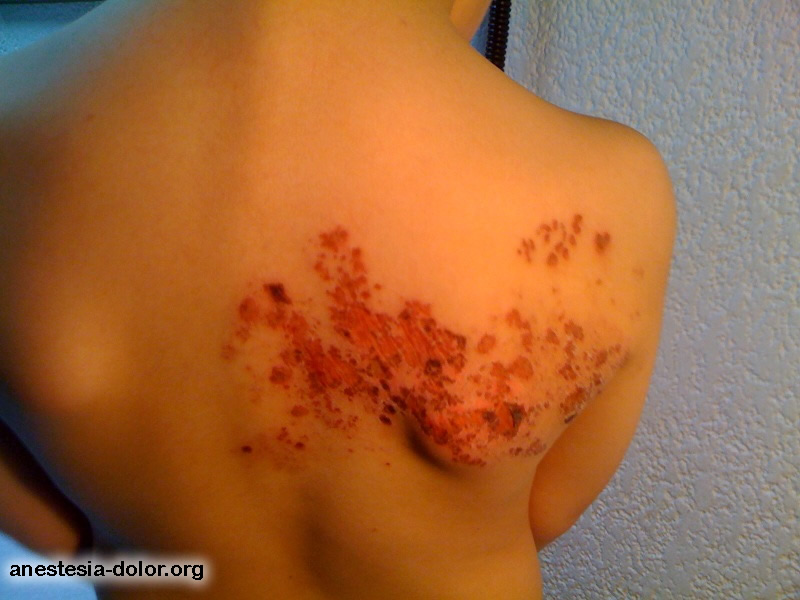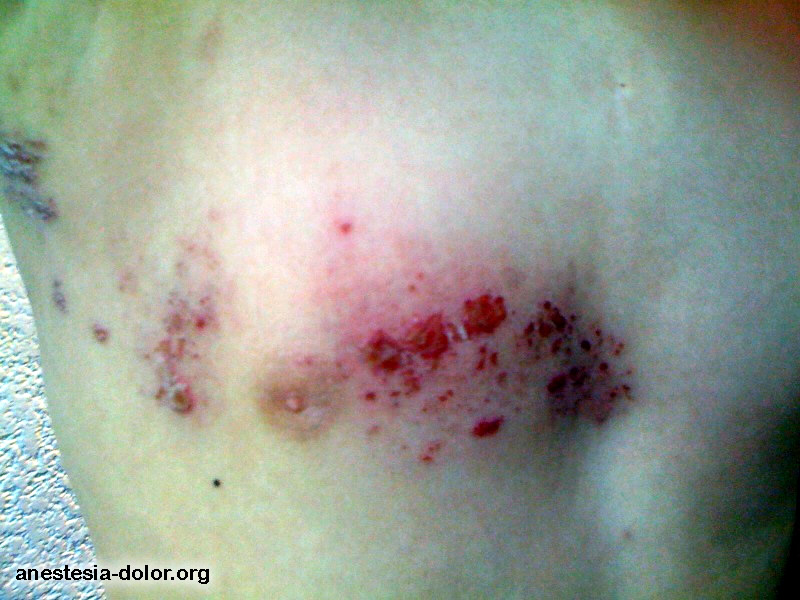Herpes zoster is caused by reactivation of latent varicella-zoster virus that resides in a dorsal root ganglion, or in the trigeminal ganglia. It can develop any time after a primary infection or after receiving live attenuated varicella vaccine. The disease manifests as painful cutaneous eruptions over a single, two or more contiguous dermatomes; they are invariably unilateral and do not cross the midline. In young children, herpes zoster has predilection for areas supplied by the cervical and sacral dermatomes, although can affect any peripheral nerve. The most common complications are secondary bacterial infection, depigmentation, and scarring. Acyclovir is the treatment of choice for acute herpes zoster infection. The incidence of pediatric herpes zoster increased with age from 20 cases per 100,000 person-years in those less than five years of age to 63 cases per 100,000 person-years in those aged 15 to 19. The incidence of childhood zoster in patients with acute lymphocytic leukemia is higher than in children without an underlying malignancy. Chickenpox in the first year of life is a risk factor for childhood zoster, with a relative risk between 2.8 and 20.9. Neither chickenpox in the second year of life nor recent vaccinations are risk factors for childhood zoster.
In this gallery: A 6 year old boy, well-nourished, immunocompetent that developed a typical clinical picture of herpes zoster located in the left T3-T5 dermatome He was treated with acyclovir and had a satisfactory evolution.





